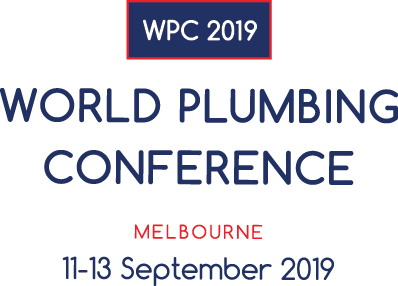FROM THE CHAIRMAN - SHAYNE LA COMBRE
We also discuss other World Plumbing Council (WPC) initiatives and activities including a new program of support for World Plumbing Day celebrations, support for the Community Plumbing Challenge 2017 development project in Indonesia and the ongoing upgrade of the WPC as a communications hub for the plumbing industry globally. Several articles in the newsletter ensure that you are informed about major developments worldwide that affect the plumbing services and products industry, such as defense of the WaterSense Scheme in the USA, establishment of the European Bathroom Forum and a progressive upgrade in plumber training in England. We have included a link to a recent major report jointly issued by the World Health Organization and UNICEF on safe water supply and sanitation services globally and note efforts to improve these services in less developed countries. In addition we want to ensure you know about upcoming events in the plumbing industry globally, including ISH Shanghai and the Indian Plumbing Conference in September 2017, the WorldSkills Competition and Conference and Plumbing Heating Cooling Contractors Association (PHCC)’s Connect 2017 in October 2017. See below for reports on recent industry events, along with upcoming events in Dates for Diary. There has been a tragic event that deservedly has grabbed huge attention worldwide: the Grenfell Tower fire disaster in London. Maybe the level of attention is due to shock that an avoidable disaster of this type could happen in one of the most developed countries in the world. Or perhaps the massive shift toward apartment living has made us all concerned that this type of tragedy could happen to us or someone we know. Irrespective of the reason behind all the attention, a fire sprinkler system – active fire protection - in the Grenfell Tower would almost certainly have saved lives. Installation and maintenance of fire sprinkler systems is within the wide-ranging scope of the global definition of a plumbing industry and we should be doing whatever we can to avoid such disasters in the future. This issue of the newsletter includes an article by the Australian National Fire Industry Association (NFIA). The NFIA and the Plumbing and Pipe Trades Employees Union recently began a joint effort to push for a Fire Industry Safety Commission, to deliver an Australia-wide licensing framework for sprinkler fitting, among other outcomes. The Grenfell Tower tragedy should serve as a wake-up call for governments worldwide. I would encourage Members to ensure fire protection is a strong part of their message to governments and other stakeholders. As more and more of the global population becomes urbanized and moves toward living and working in multi-storey buildings, we need to consider all the ways in which plumbing plays a role in the health, safety and sustainability of our community. Four Pillars of Plumbing Initiative All Members should have by now received an email detailing the Four Pillars of Plumbing initiative. This WPC program will create a unique storehouse of knowledge about the industry frameworks of plumbing industries worldwide. The knowledge-gathering over the next two years will focus on gaining descriptions of the many and varied current frameworks for plumbing industries in jurisdictions globally, by asking local plumbing industry networks to generate case studies, supported by forums and guidelines. Participants in the program will also have the opportunity to propose changed frameworks. In other words, the knowledge gathered will encompass both what is and what participants think industry frameworks should be. A 19 October 2017 Forum in Abu Dhabi will be the first event in the Four Pillars program. It will take place in conjunction with a WPC General Meeting immediately after the finish of competitor events at the 2017 WorldSkills Competition. (The Forum’s timing will allow participants to also attend the Closing Ceremony of the WorldSkills Competition in the evening of 19 October 2017.) The Abu Dhabi Forum will consist of case studies and cross-comparisons addressing ‘What should the training requirements be for a plumbing industry?’ It will show the different ways this question has been answered across several different countries and jurisdictions. If you wish to attend the Four Pillars Forum in Abu Dhabi or contribute a case study, please contact the WPC at secretariat@worldplumbing.org. The first phase of the Four Pillars of Plumbing initiative will culminate in the World Plumbing Conference in September 2019 (WPC2019) in Australia, with ‘What is the best way to build a plumbing industry?’ as its core theme. WPC2019 will primarily consist of per jurisdiction case studies and cross-comparisons addressing questions such as:
These and related questions will be clustered into four streams at WPC2019:
Four Pillars program steps After Abu Dhabi, the WPC will arrange a series of forums and surveys over the two plus years leading up to the Conference to generate case studies and other research concerning the above and related questions across the four proposed streams. For example, the WPC with its Members and other stakeholders intends holding a forum in the USA in 2018 addressing ‘How can we best ensure products used by a plumbing industry meet at least minimum standards?’ Later in 2018 and during 2019 prior to WPC2019, the WPC will arrange at least two more forums on the practices and protection dimensions of plumbing industry frameworks. Ideally there will be sufficient interest to hold substantially more than four forums, and surveys and other work addressing the four streams will proceed in parallel globally over the next two years. For each forum, the WPC will ask Members and other stakeholders to produce case studies for their respective countries or jurisdictions. This knowledge base can then be drawn upon and augmented as needed for WPC2019. The WPC will lead the global activity generating case studies by providing guidance on case study dimensions, survey instruments, examples, suggestions about forming working groups and so forth. The WPC encourages Members and others interested in the topics to form local committees and working groups to generate the per-jurisdiction case studies. Subsequent to the Conference, the WPC will ensure it makes an ongoing contribution by maintaining and further developing this unique storehouse of knowledge and providing advice and policy statements on these industry issues. Benefits The storehouse of knowledge developed through this two plus year process will subsequently be made available to WPC Members and other stakeholders to support their efforts to create and further develop effective frameworks for plumbing industries. The WPC believes plumbing industries worldwide will learn and progress by seeing the industry framework ideas that others have in place, have tested or are proposing. The opportunity for valuable lessons are perhaps most obvious in situations where plumbing industries are still in early stages of development, but countries that already have established frameworks will also gain ideas and data about further improvements. An extensive global network of plumbing industries and stakeholders will be created through the knowledge gathering process at the heart of the Four Pillars program. Participants in this new network will, with the support of the WPC, be able to draw on the network’s contacts and resources into the future.
WORLD PLUMBING COUNCIL 19 OCTOBER 2017 GENERAL MEETING AND THE FOUR PILLARS FORUM IN ABU DHABI All Members should have received an emailed agenda and invitation to attend the next General Meeting of the WPC, to be held on the morning of 19 October 2017 in Abu Dhabi, United Arab Emirates. The General Meeting will be followed by a Four Pillars of Plumbing Forum in the afternoon. If you wish to attend, please contact the WPC Secretariat at secretariat@worldplumbing.org as soon as possible. Arrangements for the General Meeting are underway and a clear indication of attendance will be very helpful. For each attendee, the notification should include:
The WPC has not made group booking accommodation arrangements. WorldSkills has arranged Observer and Spouse packages but terms and conditions apply – see the packages booklet at https://worldskillsabudhabi2017.com/application/files/8814/9361/3805/WSAD2017_Packages_v1.4.pdf A draft agenda for the General Meeting and Forum was attached to the invitation email. If you wish to obtain a copy of the agenda or add an item to the agenda, please contact the WPC Secretariat. This WPC event is being held in conjunction with the WorldSkills 2017 Competition. The competitors’ events will be complete by 18 October 2017 and the Closing Ceremony is in the evening of 19 October 2017. The WPC event finishes at 5.00pm, which will enable attendees to participate in the WorldSkills Closing Ceremony in the evening.
|
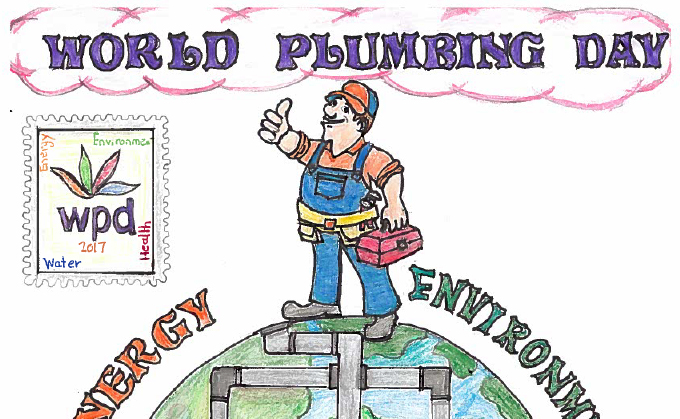 |
WINNERS OF THE 2017 WORLD PLUMBING DAY POSTER COMPETITION
One of the most warmly rewarding activities of the WPC is the annual judging of the World Plumbing Day (WPD) poster competition. Every year, school children submit their vision of the important aspects of plumbing, in particular plumbing’s contribution to health, wellbeing and environmental sustainability. The posters are scored across three dimensions: level of information about WPD; level of technique; and overall communication of the main message. The first prizewinner in 2017 was Chantel Saad of the Floyd M Stork Elementary School in Rancho Cucamonga, California USA. The prize consists of USD $1,000 for the school; and US$100 for the student. The second prize winner was Prudent Salmon of the Corinaldi Avenue Primary School in Montego Bay, St James, Jamaica. The prize is USD $500 for the school; US$50 for the student. The third prize winner was Maulana Malik of the SMP Bhakti Mulia School, Cakung, Jakarta, Timur Indonesia. The prize is USD $250 for the school; US$25 for the student. The outstanding posters produced by the prize winners are shown below.
Gaby Davis of The IAPMO Group located in southern California is a great champion of the WPD poster competition, every year giving presentations at several schools. In response to the first prize going to Chantel Saad in Rancho Cucamonga, Gaby wrote “the teachers, too, are impressed with the WPC presentation slides and are pleased that an organization such as the WPC is actively teaching children such an important lesson. They can fit the presentation and activity into their social studies, geography, and science courses, with many teachers including the slideshow and poster as part of the students’ grade. “As a matter of fact, each teacher has already asked me to confirm that I’ll visit again next year; they enjoy the lesson that much! The prize money helps the school purchase computers and other learning tools.” Donette Salmon supports the entries from the school of the second prize winner in Jamaica and she wrote: “In my country, we have a saying, 'Every mikkle mek a muckle.' This simply means that the little that you have can be accumulated to do something great and worthwhile. “The proceeds from the WPD poster contests have always gone a far way in assisting with the development of the school and this year shall be no different. Last year we revamped the outside pipe area for the students, making it cleaner and safer for them to drink water during their lunch or break times, and this year we were headed into the bathrooms to fix the leaking bowls and those without covers and such… “We do appreciate and value these monetary awards given by WPC because they have been extremely beneficial to our school and to our students ever since the first competition that we were selected as part of the top-three winners.” With the goal of the poster contest to actively engage young people, this competition is one of the best investments the WPC can make.
NEW WPC SUPPORT FOR WORLD PLUMBING DAY CELEBRATIONS
The WPC has now developed an expanded program of support for WPD celebrations, beginning with the 2018 celebration. The annual WPC support program will now include:
Entrants in the secondary school and primary school competitions will be asked to show plumbing’s contribution to health, wellbeing and environmental sustainability. There will be first, second and third prize winners for each of these competitions. The dollar amounts for the competition prizes and the awards to Members are to be confirmed. WPC Members will be asked to contact their local schools to encourage participation in the competitions. The WPC strongly encourages Members to establish local groups to organize celebrations of WPD.
If you have an enquiry about the new support program for WPD, or ideas about how to further improve the celebrations, please contact the WPC Secretariat at secretariat@worldplumbing.org.
UNITED ASSOCIATION’S SUPPORT FOR WPC SCHOLARSHIP The WPC is very pleased to announce a US$10,000 donation by the United Association (UA) to the WPC scholarship for applicants from less developed and developing countries. The Executive Board of the Council thanks the General President of the UA, Mark McManus, for this generous contribution to the scholarship, which focuses on upgrading the technical skills and educational techniques of plumbing trainers. Recipients of the scholarship return to their home countries better equipped to train others in their local area.
Tom Bigley is a Director of the Plumbing Division of the United Association (UA), or using its full name: the United Association of Journeymen and Apprentices of the Plumbing and Pipe Fitting Industry of the United States and Canada. The UA has around 340,000 Members and over 300 Locals spread across the US and Canada. It is headquartered in Annapolis, Maryland. If Members have ideas for expanding and upgrading the WPC’s Education and Training activities, please contact us via secretariat@worldplumbing.org.
WORLD PLUMBING COUNCIL AS A COMMUNICATIONS HUB The Executive Board of the WPC is committed to supporting Members by generating and distributing worthwhile information concerning the plumbing industry worldwide. Over the past few months, within the bounds of our small pool of resources, the WPC Directors and support staff have been working to upgrade the quality of our communication channels, the material communicated and the range of recipients. In addition to the improved format and coverage of the newsletter, we have initiated and reinvigorated social media channels (Twitter, LinkedIn, Facebook) and these efforts are starting to show through higher levels of engagement. We ask you to support this effort, and the worldwide plumbing industry by contributing information and further distributing communications received from the WPC.
Dave Viola is Chief Operating Officer and Executive Vice President at The IAPMO Group. The flagship activities of IAPMO are the Uniform Plumbing Code® and Uniform Mechanical Code®. IAPMO is an international organization, headquartered in Los Angeles USA. Please contact the WPC Secretariat at secretariat@worldplumbing.org with any queries or contributions you wish to make, such as topical articles or industry events.
COMMUNITY PLUMBING CHALLENGE UPDATE The current main focus of the WPC’s support for plumbing-related development activities in less developed countries is the Community Plumbing Challenge (CPC), which is managed by the International Water, Sanitation and Hygiene Foundation (IWSH). The CPC was developed to contribute to improvements in public health in regions where communities are threatened by a lack of basic sanitation and safe drinking water systems. It consists of community-based plumbing projects that address water and sanitation issues identified by community leaders.
The two prior CPC projects (Nashik, India 2015 and Diepsloot, South Africa 2016) have set the stage for CPC2017 in Cicau Village, Bekasi, Indonesia. For the first time it is a two-stage Challenge beginning with a Design Week in August 2017 followed by a Construction Week in November 2017. The WPC has donated US $10,000 to IWSH for CPC2017 and several WPC Member organizations are sending teams to take part in the Design and Construction efforts in Indonesia. For further information on the CPC and to get involved, please contact IWSH at www.iwsh.org, visit the CPC Facebook page or contact the WPC via secretariat@worldplumbing.org.
WPC OVERALL APPROACH TO DEVELOPMENT PROJECTS As an international organization committed to upgrading the image and standards of the plumbing industry worldwide, the WPC will continue to contribute to plumbing-related development projects in less developed countries and communities. For the 2017 to 2019 period, in the context of its resources, the WPC will mainly focus on facilitating or supporting development efforts. The WPC has the ability to appeal to a global network of plumbing industry contractors and product suppliers through its Member network and it will work to strengthen the effectiveness of this ability. Capacity building through partner relationships, establishing sources of potential financial and in-kind contributions and creating productive linkages between those wanting support and those capable of giving support, will be the keys to the WPC’s strategy for helping development projects. All WPC Members are asked to help the success of this strategy by being open to appeals from the WPC to support development projects, drawing on whatever resources are available to you. We call on all Members to assist with identifying potential partners in the ongoing growth of the WPC’s capacity to facilitate development projects. On behalf of the WPC, Megan Lehtonen, CEO of IWSH, attended a March 2017 WHO-UNICEF conference in Nepal focused on water supply and sanitation services in health care facilities. The event was an opportunity to show the key role the plumbing industry can play in achieving improved water and sanitation services in less developed communities and Megan gave a speech and presentation focused on the CPC program.
WPC EXECUTIVE BOARD The current Members of the WPC Executive Board, their Board positions, portfolios and locations are shown below.
* recent appointment, portfolio to be confirmed Dr Henry Hung resigned from the Executive Board in June 2017 for family health reasons. Dr Hung, a recipient of the WPC Distinguished Service Award, was representing the Plumbing Facilities Committee of the China Construction Metal Structure Association.
Please contact Board Members concerning their WPC portfolios or other WPC matters via the WPC Secretariat at secretariat@worldplumbing.org.
|
 |
WHAT CAN WE LEARN FROM THE GRENFELL TOWER FIRE TRAGEDY?
Wayne Smith, Chief Executive Officer, National Fire Industry Association Are we in the midst of a fire epidemic? The fires at the Grenfell Tower in London, Marco Polo high rise apartments in Honolulu, Torch Tower in Dubai and the many fires that have occurred without coming to public notice around the world, might suggest that we are. The most obvious response to such a series of headlining fire disasters is that we can’t be complacent about fire protection. But how often do we hear that old story where we spend more on a trendy paintjob on a newly furbished high rise apartment building that we can all so lovingly admire, yet scrimp and screw down on fire protection because of the belief that no one sees a fire protection system anyway - so who really cares? When we have that consumer attitude aligned with the old chestnut of it can’t really happen here, we are setting ourselves up for the next generation of Grenfell tower fire disasters. After the Lacrosse fire in Melbourne, we still have current day occupants of that building storing all sorts of stuff on balconies etc. (as reported by the local Melbourne media) despite the fire investigation making the point that this form of sloppy and over extended storage became a fuel source for the fire at that time. So how do we honour those lives lost by fire into the future? Education, education and more education By better understanding the implications of poor or simply non-existent fire protection, the community is better able to demand genuine fire protection from Government, regulators and builders. So, we need to enable that fire protection education by creating better relationships with the wider community influencers and leaders such as local politicians and community groups. Regulation As human beings, we regulate the provision of traffic lights so as to perform what seems to be the simple task of crossing a road. We regulate clean water services nowadays whereas centuries ago, we simply drank untreated water from a stream or well. Because we have grown our knowledge and understanding of water and its various compounds, we began to understand that water treatment in most parts of the world is essential to the protection of community health. In fact, in many parts of the developed world we now license and regulate the provision of water supply to the community. So why is it that fire protection often isn’t at that same level of community priority? Doesn’t fire protection sit in the same space as regulating pedestrian traffic or ensuring that clean water is available to the community? Improved regulation is an absolute necessity to any strategy for better fire protection. We must ensure that fire protection product plus the fire protection people who undertake fire protection work as well as the fire protection qualifications that are required by fire protection people, are all closely regulated and managed by a credible, qualified regulatory authority. Mandated or prescribed standards for fire protection We need to ensure that we have genuine fire protection standards prescribed for fire protection design, installation, maintenance, service, inspect and test, and repair of fire protection. And most importantly, we need to ensure that fire protection standards are adhered to; we need to better develop a stronger fire protection culture of compliance and quality around the world. These recent fire disasters have raised some threshold issues for the fire protection industry around the world. What regulation does a nation have of its fire protection products, their entry into the country, their application in the construction and maintenance of fire protection, their fitness for purpose? Who gets to design, install and maintain fire protection systems? What qualifications should people hold in order to do these jobs competently and professionally? For Australia, the National Fire Industry Association believes that a National Fire Safety Commission should lead the way forward on these issues.
The National Fire Safety Commission should ensure that a genuine level of knowledge, skills and fire safety standards for people and products are defined, clearly understood and complied with to ensure the ongoing safety of the Australian community. An Australian National Fire Safety Commission can become the next step in Australia becoming a world – leading fire protection nation that offers genuine fire protection to all of the community. See also: A House of Commons Briefing Paper (PDF) A New York Times article covering the event
WATER EFFICIENCY, INFRASTRUCTURE AND RE-USE HEAD AGENDA
Matt Sigler, Technical Director, Plumbing Manufacturers International This article is reproduced from the August 2017 Ripple Effect newsletter issued by Plumbing Manufacturers International and is used with the permission of PMI. As policy makers search for consensus on issues relating to water and environment, Plumbing Manufacturers International (PMI) continues to advocate for water efficiency, a restored national water infrastructure, and safe plumbing benefitting public health. While federal policymakers wrangle over budgets and priorities, policymakers in states such as California continue to push for ways to more aggressively conserve and reuse water. WaterSense program in jeopardy WaterSense is one of several programs identified for elimination under EPA’s proposed budget for Fiscal Year 2018 submitted earlier this year. WaterSense, a voluntary partnership program sponsored by the EPA, has had widespread support from the plumbing manufacturing industry and has provided valuable water- and cost-saving benefits for more than a decade. In response to EPA’s proposed cut, PMI urged the EPA to preserve and maintain the WaterSense program in a letter and a face-to-face meeting with key EPA staff. In addition, PMI and its members have reached out to more than 100 key congressional offices, emphasizing the value of maintaining the WaterSense program, urging support for a series of bills that will formally authorize the program, and working to include report language in the House and Senate FY18 Interior, EPA appropriations bill to keep the program. In addition, PMI is working closely with important partners including the Alliance for Water Efficiency (AWE), International Association of Plumbing and Mechanical Officials (IAPMO), High Performance Buildings Coalition, and National Association of Home Builders to save this vital program. WaterSense products have saved an estimated 2.1 trillion gallons of water since its inception in 2006. The program costs the EPA about $3 million a year to administer, and has delivered more than $33 billion to consumers in water and energy bill savings, according to the EPA WaterSense website. WaterSense products use 20 percent less water than plumbing products meeting the required federal standards. Most WaterSense products, including showerheads, toilets, urinals, commercial pre-rinse spray valves and faucets, are manufactured by PMI member companies. To further emphasize the importance of water efficiency, PMI and AWE released the results of a research study in April estimating that 170 billion gallons of water can be saved annually through water-efficient toilets in five states facing water scarcity. For example, it’s enough water to take 10 billion showers – more than one for each person on the planet. Water reuse presents benefits, potential risks Efforts to conserve potable water through reuse have been gaining momentum, especially in states like California hit hard by drought. Several state legislators and other stakeholders joined with PMI to successfully delay regulations relating to the use of non-potable recycled water indoors for new residential and commercial developments until scientific studies determine if recycled water use in this manner poses any risks to public health and safety, as well as if there are plumbing product performance issues when these products are used with treated wastewater. One such study that may be used as guidance is a Virginia Tech study, with funding through the American Water Works Association (AWWA) and National Science Foundation (NSF), under the direction of Drs. Amy Pruden and Marc Edwards. This research is exploring the relative abundance and diversity of antibiotic-resistant genes and pathogens in reclaimed (recycled) versus potable water distribution systems. A Virginia Tech research team recently released the results of a study concluding that interrupted corrosion control caused the Flint lead-in-water crisis. Promoting the need for restored national water infrastructure PMI has traditionally advocated for water-efficient plumbing products, particularly those certified by the WaterSense program. However, lead-in-water crises in Flint, Mich., and many other American communities – coupled with concerns about waterborne pathogens such as Legionella, water main breaks and leaks, drought and their collective impact on water infrastructure – led PMI to begin an advocacy effort focused on water infrastructural issues. In summer 2016, PMI introduced its water infrastructure advocacy through a position paper and infographic. PMI continues to educate policymakers about the importance of a restored national water infrastructure. The good news is that Congressional leaders from both parties have expressed interest in developing job-creating legislation that would restore American infrastructure. PMI will be urging Congress to address water infrastructural concerns through this legislation. In addition, a PMI study, currently in progress under the direction of Dr. Paul Sturman of Montana State University, is testing the hypothesis that low flow rates yield a greater proliferation of opportunistic waterborne pathogens, such as Legionella, in potable water and create unsafe conditions. Dr. Edwards at Virginia Tech has published research showing that waterborne pathogens, like Legionella, are more likely to grow when water lies stagnant in pipes leading to the tap. This research is especially important as lower flow rates and alternative kinds of water systems that keep water in pipes longer are being considered to address water shortages.
SUCCESSFUL INITIAL ACTION TO DEFEND WATERSENSE The Trump Administration budget called for elimination of the WaterSense program, which is managed by the US Environmental Protection Authority. However the 21 July 2017 Riso Report, issued by the Plumbing Heating and Cooling Contractors National Association (PHCC), notes that a US House of Representatives appropriations subcommittee has recently stated that it “...rejects the proposed elimination of the WaterSense program.” PHCC is part of several coalitions working to retain the WaterSense program. Although the issue has not yet been resolved successfully, the House of Representatives is now in a position to push for the continuation of WaterSense during the September 2017 budget debate. See www.safeplumbing.org/news/newsletter/details/august-2017
EPA’S VOLUNTARY WATERSENSE PROGRAM DEMONSTRATES SUCCESS
The Office of Inspector General of the US Environmental Protection Agency (EPA) released a report on the EPA’s WaterSense Program on 1 August 2017 which found that use of WaterSense-labeled products saved an estimated 1.5 trillion gallons of water and reduced the amount of energy needed to heat, pump and treat water by 212 billion kilowatt hours. The EPA launched WaterSense in 2006, in part to ensure the performance of water-efficient products. Use of WaterSense-labeled products saved an estimated 1.5 trillion gallons of water and reduced the amount of energy needed to heat, pump and treat water by 212 billion kilowatt hours. As a result, consumers saved an estimated $32.6 billion. For every US Federal Government dollar spent on the program, consumers saved an estimated $1,100. The EPA reported that more than 1,738 partners had joined the WaterSense program through 2015. For the full report see www.epa.gov/sites/production/files/2017-08/documents/_epaoig_20170801-17-p-0352.pdf.
LAUNCH OF THE EUROPEAN BATHROOM FORUM AND WATER LABEL
This new platform presently consists of 57 European manufacturers and nine trade bodies and associations from the bathroom industry. The European Bathroom Forum plans a transition period of 18 months, mainly devoted to defining the technical content of the label and to making this initiative known within the sector. This period will end with the launch of the initiative at the ISH Frankfurt 2019, the most important trade fair specializing in the bathroom sector in the world. Much of the drive to establish the Water Label and the European Bathroom Forum has been led by Yvonne Orgill, Chief Executive Officer of the Bathroom Manufacturers Association, a WPC Member. The Chairman of the European Bathroom Forum is Pietro Mariotti and a secretariat is now in place. This initiative by the bathroom industry has been conceived with the aim of contributing to the global goals of the European Commission in the field of sustainability and efficiency related to water and energy consumption. According to a recent study, the perception of users about water consumption in the bathroom space is approximately 20% of its real use. Water Label will allow an improvement of this knowledge by offering clear information that has been agreed by all manufacturers in the sector. The next steps: recognition by the European Union In a meeting held in Barcelona on the 11 July 2017, the European Bathroom Forum defined the next steps to be taken in order to implement the Water Label initiative. Among them, the aim of obtaining the support and recognition of the European Commission stands out, so that manufacturers will voluntarily adopt this information standard for consumers. For further information see: www.europeanwaterlabel.eu/.
UPGRADED PLUMBER TRAINING FRAMEWORK IN ENGLAND
The Plumbing and Domestic Heating Technician Apprenticeship Board has announced that the Government has approved the Apprenticeship Assessment Plan for England. The Assessment Plan provides a prospectus for students, training providers and assessing organizations and details what is involved in the Plumbing and Domestic Heating Technician Apprenticeship. The Plumbing and Domestic Heating Technician Apprenticeship Board was formed in December 2016 to ensure the future success of English plumbing and domestic heating apprenticeships and, following the approval of the Assessment Plan, the Board is now in dialogue with Government over the technical detail. The Board was assembled by and is administered by the Association of Plumbing and Heating Contractors (APHC) and the Chartered Institute of Plumbing and Heating Engineering (CIPHE), the two leading membership organizations within the plumbing and heating industry in England, both WPC Members. APCH and CIPHE joined forces to create an industry partnership with the ultimate goal of producing a world class plumbing and heating workforce in England. The apprenticeship will typically take 48 months to complete with successful completion resulting in an NVQ Level 3 Plumbing & Heating Qualification. The apprentices will undertake a structured program of study whilst in suitable employment and complete on-program training and assessment involving a series of knowledge based and practical assessments. Successful completion of the Apprenticeship Qualification will result in a grade being awarded of either a Pass, Merit or Distinction. For companies that are members of a competent person scheme and the Gas Safe Register, the Apprenticeship Qualification will deliver individuals who meet the competence requirements to be able to work through a competent person scheme for oil and solid fuel and the Gas Safe Register for gas. The overriding goal of the Apprenticeship Qualification is to deliver an appropriately skilled plumbing and heating workforce in England, able to work at a ‘world-class’ standard. The Board is working towards an official launch of the new Apprenticeship Standard in January 2018.
See www.aphc.co.uk and www.ciphe.org.uk.
NEW APHC PRESIDENT CALLS FOR IMPROVED TRAINING AND PROSECUTIONS FOR DEFECTIVE GAS WORK
The new President of the UK Association of Plumbing & Heating Contractors (APHC), Mark Antrobus, recently outlined his key priorities for improving the quality of new entrants and changes in how the gas registration body operates. In his June 2017 speech, Mark explained how the closure of SummitSkills had led to APHC, British Plumbing Employers Council and the Scottish and Northern Ireland Plumbing Employers Federation to set-up a new body, The Plumbing & Domestic Heating Skills Partnership, to oversee the development of plumbing and heating qualifications and apprenticeships. Mark Antrobus voiced his long-term concerns over the financing of training and apprenticeships: “A strong message needs to go to Government because as an industry that is made up of largely micro businesses, we cannot be expected to fund all the necessary apprenticeship and qualification design, development and quality assurance work. We need some level of Government support to fund this vital work.” Mark also outlined how he believed the industry needs to put an end to full-time college based training, how the demand for training needs to be led by the number of placements available from employers and how Government needs to properly incentivise employers to train apprentices. Mark went on to voice his concerns over how the industry’s gas registration body operates: “There is a need for greater enforcement action in penalising those responsible for dangerous gas work and further legislation banning these individuals from re-registering.” “I also believe that further work is necessary around the way in which those aspiring to develop a gas installation and maintenance career can prove competence. Time and again we see the outcomes in the form of dangerous gas work resulting from the various fast track training solutions. ACS was not meant as a vehicle for training new entrants, its purpose is for use with experienced operatives.” Mark concluded his speech by saying that if these points are not addressed then he believes gas registrants are likely to react in much the same way as they did when the CGSC Scheme was launched. See http://www.aphc.co.uk/news_article.asp?id=1651
SWEDISH PLUMBERS AND ELECTRICIANS ASSOCIATION BUYS PLUMBING SCHOOL
Installatörsföretagen is an organization formed by the merger of the Electrical Installation Agency EIO and VVS Virksomheden. The EIO is an industry and employer’s organization for Sweden's electricity and telecommunications companies and VVS Företagen is an industry organization for plumbing companies as well as an employer organization for companies active in cold pipes, industrial pipes, ventilation and technical insulation. In late June 2017 Installatörsföretagen acquired REFIS, a training school focused on plumbing skills based in Stockholm. Jan Siezing, the CEO of Installatörsföretagen, is very satisfied with the purchase and looks to the future with confidence. He commented “REFIS is a very good school. They have a well-functioning business with talented and ambitious employees. The school is focused on the HVAC and property program which makes it easier to develop the plumbing program to become even better and to ensure students who complete their plumbing training actually possess the skills needed by industry. REFIS has built up a good partnership with companies in Stockholm over the years, which is a prerequisite for training tailored to industry requirements. The school currently offers secondary education HVAC and building programs focusing on plumbing. The industry is in great need of skilled workers and the purchase of the school is an important part of Installatörsföretagen’s work towards sustainable skills. The purchase of the school is seen as an example that could spread throughout Sweden. See www.installatorsforetagen.se/press/2017/juni/installatorsforetagen-koper-vvs-skola.
NEW WHO AND UNICEF GLOBAL REPORT ON SAFE WATER SUPPLY AND SANITATION SERVICES
The WHO/UNICEF Joint Monitoring Programme for Water Supply, Sanitation and Hygiene has published a new report: Progress on Drinking Water, Sanitation and Hygiene: 2017 Update and SDG Baselines. Estimates of safely managed drinking water services are presented for 96 countries, while estimates are provided for safely managed sanitation services for 84 countries. This report also presents data on the availability of handwashing facilities with soap and water in the home for 70 countries. The report finds that in 2015, 29% of the global population (2.1 billion people) lacked safely managed drinking water services – meaning water at home, available, and safe. Sixty-one percent of the global population (4.5 billion people) lacked safely managed sanitation services – meaning use of a toilet or latrine that leads to treatment or safe disposal of excreta. Data on handwashing were too few to make a global estimate, but in sub-Saharan Africa, only 15% of the population had access to a handwashing facility with soap and water. In addition the report introduces and defines new indicators of safely managed drinking water and sanitation services. The 2.1 billion people without safely managed drinking water services includes 1.3 billion people with basic services, meaning an improved water source located within 30 minutes; 263 million people with limited services, or an improved water source requiring more than 30 minutes to collect water; 423 million people taking water from unprotected wells and springs, and 159 million people collecting untreated surface water from lakes, ponds, rivers and streams. The 4.5 billion people without safely managed sanitation services includes 2.1 billion people with basic services, meaning an improved sanitation facility which is not shared; 600 million people with limited services, or an improved sanitation facility which is shared; 856 million people using unprotected latrines or bucket toilets, and 892 million people collecting practising open defecation. Safely managed services represent an ambitious new global benchmark and estimates are not yet available for all countries. The report identifies a number of critical data gaps that will need to be addressed to enable systematic monitoring of Sustainable Development Goal (SDG) targets. Yet the data now available are more than enough to show the tasks at hand: eliminate open defecation for the nearly 900 million people who continue to lack even the most rudimentary sanitation; bring basic water, sanitation and hygiene within the reach of the most disadvantaged; and support progress for those who already have basic services, but do not have truly safe drinking water or adequate sanitation. See www.washdata.org/report/jmp-2017-report-launch-version. The website www.washdata.org allows visitors to interactively access the full dataset and download individual country files. Login with username “washdata” and password “preview”.
NEW ASIAN DEVELOPMENT BANK AND WHO HANDBOOK ON WATER SAFETY PLANNING FOR URBAN WATER UTILITIES This new handbook provides practical guidance on integrating the Water Safety Plan (WSP) approach into Asian Development Bank (ADB) urban water projects, to aid compliance with global best practices. Following the World Health Organization (WHO) Water Safety Plan Manual (2009), adapted to ADB’s operations, this handbook offers step-by-step guidance on developing and implementing a WSP. The WHO estimates that drinking contaminated water causes 502,000 diarrheal deaths each year and that by 2025 half of the world's population will be living in water-stressed areas. ADB is committed to providing safe drinking water throughout Asia and the Pacific. This new publication provides a step-by-step guide on developing and implementing a Water Safety Plan using guidelines, templates, evaluation criteria, and terms of reference. See www.adb.org/documents/urban-water-safety-planning-guide
RECENT INDUSTRY EVENTS ISH Frankfurt is the leading international trade fair for bathroom, plumbing, heating and air conditioning products and services – as evidenced by the visitor and exhibitor figures for ISH 2017. ISH Frankfurt is held every two years and the March 2017 edition was another outstanding and record breaking event. The number of visitors hit a new high of 198,810 and the number of exhibitors also reached a new record of 2,485. The exhibitor space in 2017 was a huge 261,300 square meters. The fair attracts key decision makers, with 45% of visitors holding upper or top management positions. Nearly 40% of visitors come to ISH from countries outside Germany, with China providing the largest number of international visitors. Of the exhibitors, 64% are from outside Germany. Ninety-six per cent of surveyed visitors said they were very satisfied or satisfied with the 2017 fair. The March 2019 edition of ISH Frankfurt is likely to be another major step forward in the success of this event. It will be extended by one day (operating Monday through Friday) and will have enlarged and renewed exhibition spaces. See the ISH 2019 notification in upcoming events section below. https://ish.messefrankfurt.com/frankfurt/en/besucher/willkommen.html
SUCCESSFUL CIPH MAKING HISTORY TOGETHER CONFERENCE JULY 2017
The event provided attendees the opportunity to engage with a powerful roster of speakers on a variety of informative topics. The concepts and new approaches behind these topics were instrumental in helping to illuminate the conference theme. The event was arranged by ABC 2017 Chairman Allen Taylor (Taylor Pipe Supports) and his Committee; Ravi Beech (Valley Acrylic), Claude DesRosiers (Boone Plumbing & Heating), André Descôteaux (Deschênes & Fils Ltée), Andrew Dyck (Barclay Sales), David Harris (Harris Atlantic Sales), Gail Kaufman (Wolseley Canada), Barry Moulsdale (Spectrum Brands), Matt Robinson (B.A. Robinson), Peter Stojanov (Onward Sales & Marketing) and Tim Main (Xylem). The conference was launched by Deputy Mayor of Ottawa Mark Taylor, who greeted Delegates and Companions on behalf of the city. This was followed by renowned explorer, adventurer and wildlife photographer Michelle Valberg who spoke on "Making History Together - The Power of Celebration through the Lens". Michelle was followed by Roger Greenberg, a second generation co-owner of the Minto Group who presented “Succession Planning in a Family Business – One Perspective”. Roger was followed by the former Minister of Foreign Affairs John Baird who delivered a discussion on the current Canadian political landscape. The 2nd day of speakers featured former Ambassador to the United States Derek Burney who spoke on “Canada in the World of Trump”. Derek was followed by Senator Donald Plett who addressed the importance of government and industry partnership through his presentation “The Power of Collaboration”. The keynote speaker was former Governor General Adrienne Clarkson who spoke on “Making History Together: Building a Stronger Canada”. The Conference also featured NRCan’s Director General of the Office of Energy Efficiency Patricia Fuller who provided an overview of government priorities for clean growth and climate change in Canada’s building sector at the annual Hydronics Luncheon in her presentation “Building Practical Regulations”. In addition, several of CIPH’s key North American Allies offered greetings on behalf of their associations including Del Pawliuk of R.F. Contracting, Chairman of MCA Canada; Peter Jahrling of Sloan Valve Company, Chairman of Plumbing Manufacturers International, and; Rick Ellul of Belimo Aircontrols, Chairman of the Heating Refrigeration Air Conditioning Institute of Canada.
DATES FOR DIARY 2017
From 2019 the trade fair will begin on Monday, instead of Tuesday as in the past. The next ISH Frankfurt will also benefit from a new exhibition hall, a new layout in the Energy section and other improvements in locations and venues.
Contact secretariat@worldplumbing.org to provide an event report or request listing of an upcoming event.
|
|

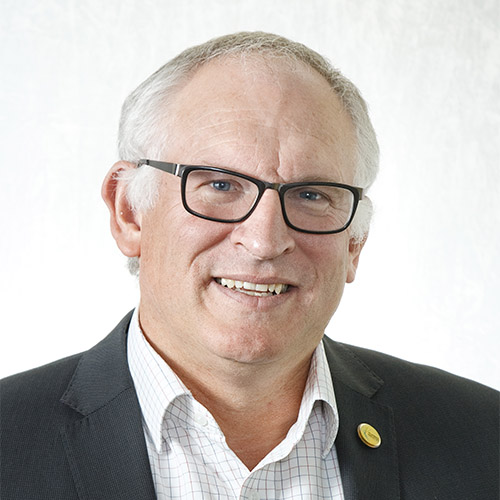 It has been great to receive such positive feedback on the revamped Review over the last two months and I am sure you will find this massive edition very informative. In this August Review we will be introducing the Four Pillars of Plumbing Initiative and inviting you to take part in the General Meeting and Four Pillars Forum on 19 October 2017 in Abu Dhabi.
It has been great to receive such positive feedback on the revamped Review over the last two months and I am sure you will find this massive edition very informative. In this August Review we will be introducing the Four Pillars of Plumbing Initiative and inviting you to take part in the General Meeting and Four Pillars Forum on 19 October 2017 in Abu Dhabi. 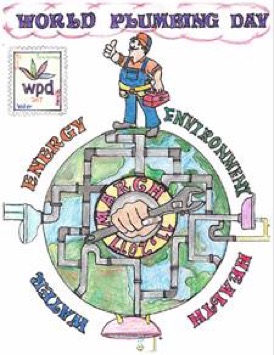
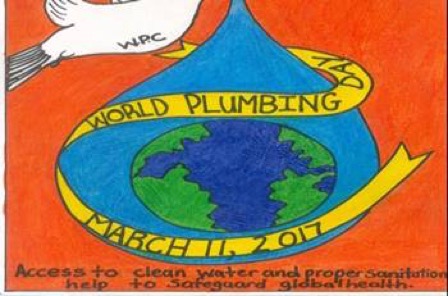
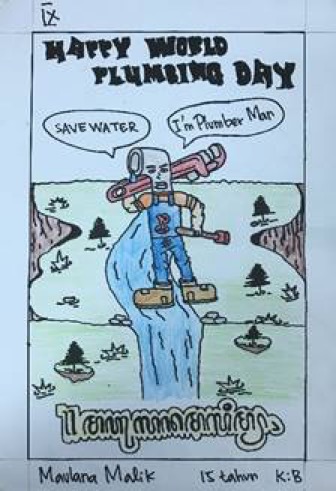
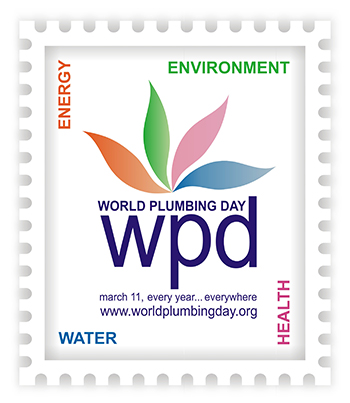 The idea of celebrating World Plumbing Day (WPD) annually on 11 March was successfully launched by the WPC in 2010 and the WPC has supported celebrations in a range of ways, including the annual Chair’s Message, communications that highlight the celebrations worldwide, and poster competitions.
The idea of celebrating World Plumbing Day (WPD) annually on 11 March was successfully launched by the WPC in 2010 and the WPC has supported celebrations in a range of ways, including the annual Chair’s Message, communications that highlight the celebrations worldwide, and poster competitions. 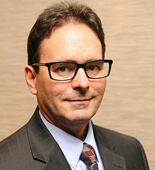 WPC Director Alberto Fossa has responsibility for the WPD portfolio. Based in Sao Paulo, Alberto is Director of ABRINSTAL, the ‘Brazilian Association for Conformity and Efficiency of Facilities’. Established in 2006, ABRINSTAL is focused on the conformity and efficiency of electrical, hydraulic, sanitary, gas, fire prevention, firefighting, solar heating, building, automotive, security electronics and telecommunication installations.
WPC Director Alberto Fossa has responsibility for the WPD portfolio. Based in Sao Paulo, Alberto is Director of ABRINSTAL, the ‘Brazilian Association for Conformity and Efficiency of Facilities’. Established in 2006, ABRINSTAL is focused on the conformity and efficiency of electrical, hydraulic, sanitary, gas, fire prevention, firefighting, solar heating, building, automotive, security electronics and telecommunication installations. 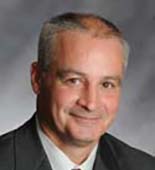 WPC Deputy Chair Tom Bigley leads the WPC’s Education and Training portfolio. Tom and fellow Executive Board Members are presently investigating a new strategy for the WPC’s Education & Training portfolio that would enable a larger number of beneficiaries at a lower cost per beneficiary.
WPC Deputy Chair Tom Bigley leads the WPC’s Education and Training portfolio. Tom and fellow Executive Board Members are presently investigating a new strategy for the WPC’s Education & Training portfolio that would enable a larger number of beneficiaries at a lower cost per beneficiary. 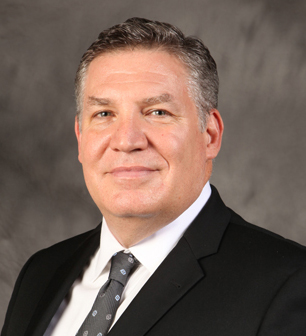 WPC Director Dave Viola leads the WPC’s Marketing & Communications portfolio and has been driving the WPC’s upgraded contribution as a communications hub.
WPC Director Dave Viola leads the WPC’s Marketing & Communications portfolio and has been driving the WPC’s upgraded contribution as a communications hub. 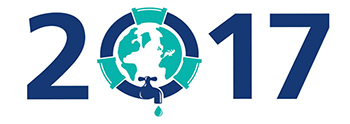
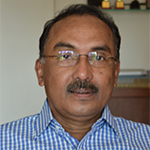 WPC Director John Joseph is responsible for the WPC’s CPC-Development Projects portfolio and has been leading the WPC’s efforts to upgrade its contribution in this area. John Joseph was nominated to become a Director by the Indian Plumbing Association. John is Principal Consultant and Managing Director of engineering consultancy firm John Mech-El Technologies, with offices in Mumbai and Bangalore.
WPC Director John Joseph is responsible for the WPC’s CPC-Development Projects portfolio and has been leading the WPC’s efforts to upgrade its contribution in this area. John Joseph was nominated to become a Director by the Indian Plumbing Association. John is Principal Consultant and Managing Director of engineering consultancy firm John Mech-El Technologies, with offices in Mumbai and Bangalore.  Liu Jian, Chairman of the Plumbing Facilities Committee, was nominated and, as sole nominee, was appointed to the Board in July 2017.
Liu Jian, Chairman of the Plumbing Facilities Committee, was nominated and, as sole nominee, was appointed to the Board in July 2017. A new coalition aimed at establishing an environmental Water Label in Europe has been established: the European Bathroom Forum. The aim of the Water Label is to ensure transparent, reliable and updated information about the water and energy consumption of bathroom products.
A new coalition aimed at establishing an environmental Water Label in Europe has been established: the European Bathroom Forum. The aim of the Water Label is to ensure transparent, reliable and updated information about the water and energy consumption of bathroom products. 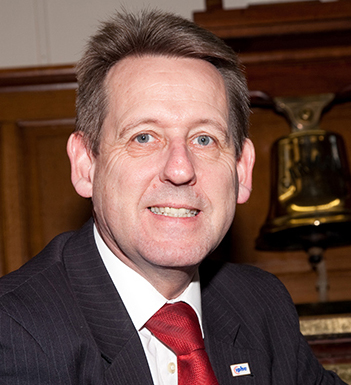 WPC Director Kevin Wellman is Chief Executive Officer of CIPHE. CIPHE is the professional body for the UK plumbing and heating industry. It has a membership of around 7,200 including approximately 170 manufacturers and distributors. Most live in the UK, but some 800 are in Hong Kong and a further 300 live in over 30 other countries.
WPC Director Kevin Wellman is Chief Executive Officer of CIPHE. CIPHE is the professional body for the UK plumbing and heating industry. It has a membership of around 7,200 including approximately 170 manufacturers and distributors. Most live in the UK, but some 800 are in Hong Kong and a further 300 live in over 30 other countries.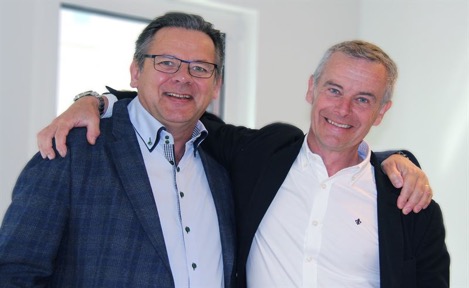 In late June 2017 Installatörsföretagen, an organization formed by the merger of the Electrical Installation Agency EIO and VVS Virksomheden, acquired REFIS, a training school focused on plumbing skills based in Stockholm.
In late June 2017 Installatörsföretagen, an organization formed by the merger of the Electrical Installation Agency EIO and VVS Virksomheden, acquired REFIS, a training school focused on plumbing skills based in Stockholm. 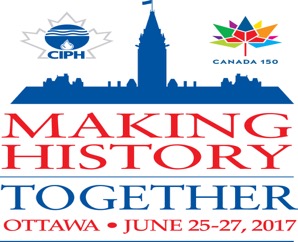 The Canadian Institute of Plumbing and Heating (CIPH) held a successful Annual Business Conference with a ‘Making History Together’ theme The event was held over 25 to 27 June 2017 in Ottawa Ontario, in conjunction with the 150th Anniversary of Canadian Confederation. More than 280 Delegates and Companions from across North America attended the event.
The Canadian Institute of Plumbing and Heating (CIPH) held a successful Annual Business Conference with a ‘Making History Together’ theme The event was held over 25 to 27 June 2017 in Ottawa Ontario, in conjunction with the 150th Anniversary of Canadian Confederation. More than 280 Delegates and Companions from across North America attended the event.